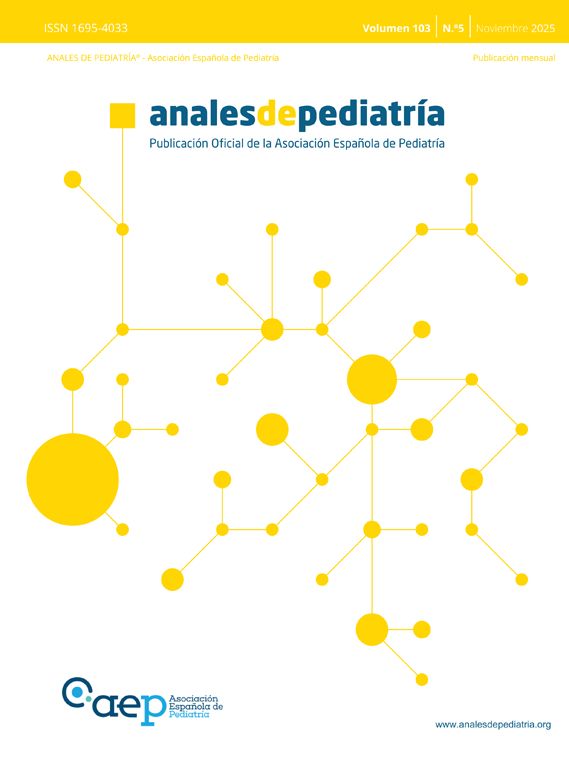A girl aged 3 years presented with palmar pain of a few days’ duration that did not respond to commonly used analgesics. She was admitted for evaluation, with malignant disease ruled out first. In the first days of the stay, she developed hypertension, which responded to amlodipine. At 1 week from admission, the intense pain persisted, accompanied by inflammation, rigidity and loss of function in several joints, more severe at the interphalangeal level. Steroid therapy was initiated, after which the patient developed cutaneous nodules in different locations, as can be seen in Figs. 1 and 2.
Several diagnoses were possible, so a biopsy sample was obtained from one of the lesions, the examination of which revealed mucin deposition in the dermis (Fig. 3), fibroblast and fibrovascular proliferation and lymphocytic inflammation, leading to the definitive diagnosis of self-healing juvenile cutaneous mucinosis, a rare childhood disease presenting with cutaneous and rheumatic manifestations. The cutaneous manifestations may include nodules in periarticular regions and the head or neck and the papules described as whitish lesions in erythematous cutaneous tissue.1
Despite its benign course, the abrupt onset of symptoms and the extensive cutaneous involvement may lead to the performance of an excessive number of diagnostic tests and overtreatment, at times aggressive, before the definitive diagnosis is reached.2,3









